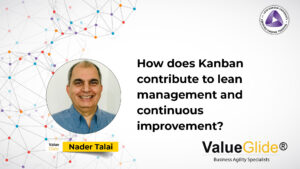The Crucial Role of Work in Progress Limits in Kanban Systems 🔄
Introduction: Understanding Work in Progress Limits
Work in Progress (WIP) limits are fundamental to the functioning of a Kanban system. They serve as a crucial mechanism for managing workflow, ensuring predictability, and avoiding overburdening. Let’s delve into the importance of WIP limits and how they transform the nature of work within a Kanban system.
Essential for a True Kanban System
Defining a Kanban System
- Without Limits, No Kanban: The absence of WIP limits means you don’t have a true Kanban system. These limits are what differentiate a Kanban system from an uncontrolled workflow where work keeps piling up without any constraints.
Preventing Unpredictability and Firefighting
Managing Incoming Work Effectively
- Avoiding Uncontrolled Queues: Without WIP limits, work queues continue to grow, leading to unpredictability. Work is often started haphazardly or in response to the loudest demand, creating a chaotic environment.
- Familiarity with Firefighting: Teams in such systems are constantly firefighting, responding to urgent demands and expedites, which leads to interruptions and delays in other work.
Creating a Controlled and Predictable System
Implementing Constraints for Efficiency
- Establishing Constraints: WIP limits act as constraints on the system, signaling when new work can be started. This could mean not starting new work until the number of tasks drops below a certain threshold.
- Understanding System Constraints: These limits help identify bottlenecks in the system, shifting the focus from limitless work intake to a more controlled and manageable flow.
Benefits of Work in Progress Limits
Enhancing System Functionality
- Predictability and Reliability: With WIP limits, the system becomes more predictable, allowing for more reliable planning and delivery.
- Reducing Overburdening: By limiting work intake, teams are not overburdened, leading to a healthier work environment.
- Statistical Knowledge and Promises: A system with WIP limits provides data that can be used for statistical analysis, enabling teams to make and keep realistic promises.
- Creating a Happier Work Environment: With controlled workloads and reduced firefighting, the work environment becomes less stressful and more productive.
Conclusion: Embracing WIP Limits for Kanban Success
WIP limits are not just a feature of Kanban systems; they are a necessity for creating a controlled, predictable, and efficient work environment. By implementing these limits, organizations can move away from chaotic, reactive workflows to a more structured and data-driven approach. Embrace WIP limits in your Kanban system to unlock its full potential, delivering value predictably and creating a healthier work environment. 🔄













